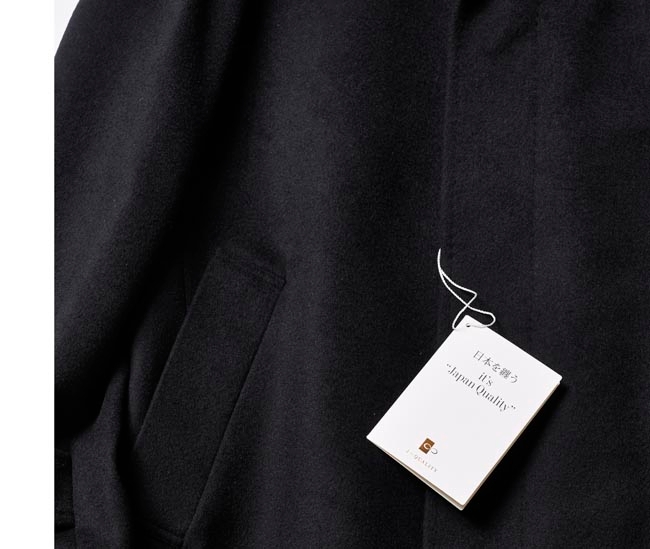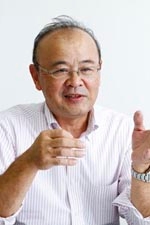Fighting Back with 100% Japanese-Made Clothing
In the 1980s, half of the clothing sold in Japan was also made in Japan. Today that figure has plummeted to a mere 3.2 percent. The last 20 years have been lost decades for the Japanese apparel industry. Now, in an effort to regain market share, a new system of certification dubbed J ∞ QUALITY has been launched. We talked to Takahito Miyahara of J ∞ QUALITY operations about what it hopes to achieve.

All J ∞ QUALITY-certified goods carry this tag.
Japanese workmanship is internationally renowned, and the Japanese apparel sector is no exception. Japanese textiles in particular are so well-made that famous French fashion houses send their buyers here specifically to procure them. On the other hand, Japanese apparel makers venturing overseas are struggling. This issue was raised by the Japan Apparel Fashion Industry Council three years ago, resulting in a drive to emphasize the Japanese origins of Japanese-made garments. Emerging from these efforts is the J ∞ QUALITY certification system, which provides assurance that a product is made in Japan and is of good quality. Any item of clothing may display the label “Made in Japan” if the final production process (sewing) is carried out in Japan, but the J ∞ QUALITY certification is proof that all the processes involved in creating an item of apparel, including weaving, knitting, dyeing, and sewing, have been performed in Japan.
There are two types of J ∞ QUALITY certification. One is a company certification, in which a firm applies for certification and undergoes appraisal. Checks are made to confirm whether the company is adhering to labor laws and workplace safety and hygiene regulations, verify its environmental performance, and so on, and if any doubts arise, on-site inspections are carried out.
The other is product certification. A final product certification division assembles samples and inspects the materials, sewing, drafting, design, finish, and so on. Naturally, if attention to detail is felt to be insufficient, certification will not be awarded. This rigorous appraisal is designed to maintain the standard of 100 percent Japanese-made products.
This autumn J ∞ QUALITY-certified goods will hit the stores. We hope consumers will take a close look at these products, and experience their quality for themselves.

Head of the J ∞ QUALITY operations office Takahito Miyahara